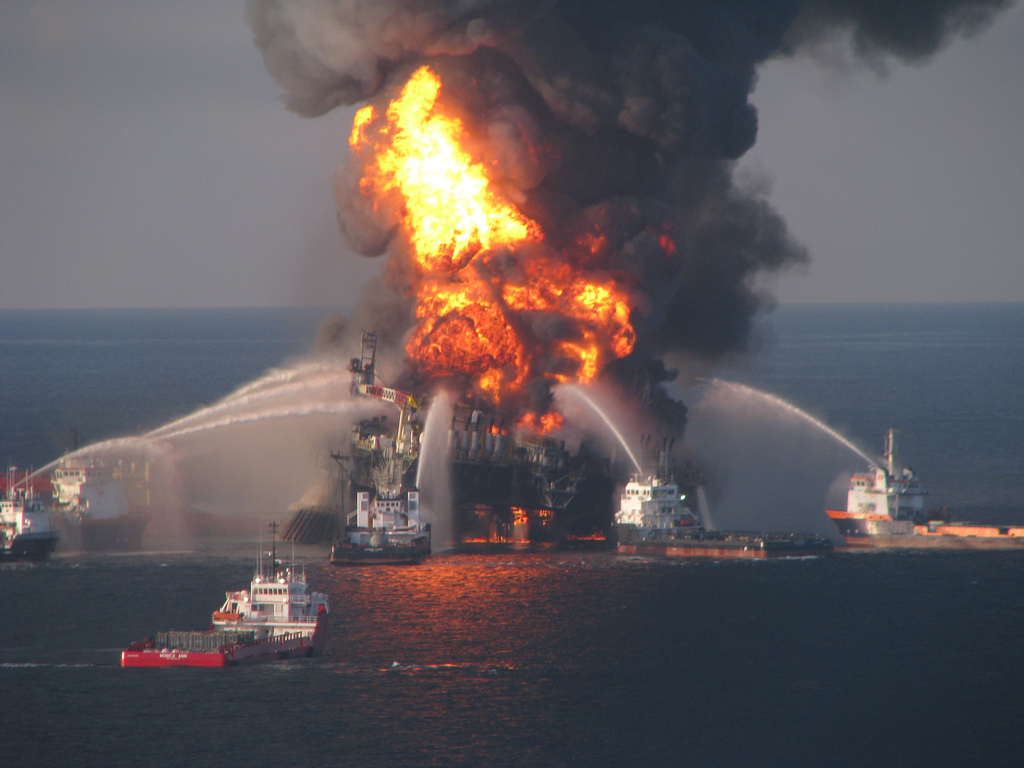November 1, 2016
Beyond Finger Pointing – Safety Culture and the Deepwater Horizon Incident
 Deepwater Horizon began showing in United States theaters on September 30. As with most historical films, the post-release flurry of critique and dialogue about the film’s accuracy has ensued, and BP’s blunders have become a conversation topic around most dinner tables. While we all love a great villain, and the portrayal of BP fits so well into our definition of evil, the basic formula of a good movie, by design, does not leave much room for the complexities of reality. At most, it serves as an opportunity to have a deeper conversation about the multitude of factors that orchestrate such a catastrophe.
Deepwater Horizon began showing in United States theaters on September 30. As with most historical films, the post-release flurry of critique and dialogue about the film’s accuracy has ensued, and BP’s blunders have become a conversation topic around most dinner tables. While we all love a great villain, and the portrayal of BP fits so well into our definition of evil, the basic formula of a good movie, by design, does not leave much room for the complexities of reality. At most, it serves as an opportunity to have a deeper conversation about the multitude of factors that orchestrate such a catastrophe.
In the real world, major events such as the Deepwater Horizon explosion are never black and white. This is evident in the fact that it took the Chemical Safety Board (CSB) six years to release their Investigation Report Executive Summary. After such a long period of investigation, the CSB found that this was not just a case of technical failure or individual negligence, but a failure in safety culture. The CSB’s final investigation report concluded, “the BP and Transocean [owner of the Deepwater Horizon rig] organizational cultures did not promote process safety.”[1]
So, what is culture and how does it relate to the Deepwater Horizon? In practical terms, culture is ‘the way we do things around here.’ It is the shared values, beliefs, and assumptions that govern organizational behavior, including safety.[2] Dr. Krause and Kristen Bell have done extensive research, consulting and innovation on organizational culture and safety climate. Their work demonstrates that culture is created by interactions between people at every level of an organization– from the board of directors down to the worker standing on the well deck.[3] Culture is part of the context we operate in – it tells us what is valuable, what is acceptable, and what the priority should be.
For over a century, the work of getting oil out of the ground has been viewed much like early gold prospecting – extremely risky, but with the promise of enormous payoffs, a risk worth taking. Today, this value for risk still has a subtle existence that affects the culture of the offshore drilling industry. Anyone can be influenced by this value for “prospecting”, which can foster a low value for safety and an increase in risk-seeking decisions. When this happens at the top of an organization, as the movie suggests happened at BP and Transocean, the effects on decision-making and culture are pervasive.
Although the movie may not be completely historically accurate, it does shed light on the effects of culture on decisions in any given circumstance. As an example, Halliburton, the company responsible for cementing the well shut, decided not to complete installation of the cement barrier. They were under enormous time pressure coming from their client, BP, who at the time was $58 million over budget and were incurring a loss of a $1 million per day to lease the Deepwater Horizon.[4] When this was communicated to the Halliburton crew, they evaluated their next action based on the values of the culture they operated in. Therefore, the cement barrier was not effectively installed.[5]
The CSB concluded that at the heart of the Deepwater Horizon tragedy, “the problem rests with companies’ entire safety culture.”[6] Furthermore, the National Commission concluded that the oil and gas industry must make “sweeping reforms, no less than a fundamental transformation of its safety culture.”4 Government agencies as well as organizations are beginning to see the importance of safety culture in order to avoid further accidents like Deepwater Horizon. The value for safety must be cultivated, starting at the top. This is not a short-term endeavor, but requires major changes throughout an organization that can take years. Changing the way people think is a daunting task, but with the right plan, tools, and measurements, improvements can be made incrementally that could keep such events as the Deepwater Horizon in the history books, and we won’t have to see future tragedies portrayed on the big screen.
Learn more about our approach to safety culture
[1] Chemical Safety and Hazard Investigation Board (2016). Investigation report, volume 3: drilling rig explosion and fire at the macondo well. Retrieved from http://www.csb.gov/macondo-blowout-and-explosion/.
[2] Krause, T., & Bell, K. (2015). 7 insights into safety leadership. Ventura, CA: The Safety Leadership Institute.
[3] Krause, T. (2005). Leading with safety. Hoboken, NJ: John Wiley & Sons, Inc.
[4] National Commission on the BP Deepwater Horizon Oil Spill and Offshore Drilling. (2011). Deep water: the gulf oil disaster and the future of offshore drilling: report to the president. Retrieved from: https://www.gpo.gov/fdsys/pkg/gpo-oilcommission/pdf/gpo-oilcommission.pdf.
[5] Chemical Safety and Hazard Investigation Board (2016). Investigation report executive summary: Explosion and fire at the macondo well. Report no. 2010-10-i-os. Retrieved from http://www.csb.gov/assets/1/7/20160412_Macondo_Full_Exec_Summary.pdf.
[6] Chemical Safety and Hazard Investigation Board (2016). The US chemical safety board’s investigation into the macondo disaster finds offshore risk management and regulatory oversight still inadequate in gulf of mexico. (2016). Retrieved from http://www.csb.gov/the-us-chemical-safety-boards-investigation-into-the-macondo-disaster-finds-offshore-risk-management-and-regulatory-oversight-still-inadequate-in-gulf-of-mexico/.


